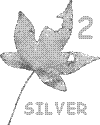 NAME: Beatrice Laporte
NAME: Beatrice LaporteLOCATION: Merrickville, Ontario, CANADA
AWARD DATE: July 21, 2008
*SPECIAL: Click on the names below to see my pictures of each species
 NAME: Beatrice Laporte
NAME: Beatrice Laporte*SPECIAL: Click on the names below to see my pictures of each species
- Mallard Duck (Anas platyrhynchos)
- Northern Flicker - yellow shafted (Colaptes auratus)
- Yellow-bellied Sapsucker (Sphyrapicus varius)
- Black-capped Chickadee (Poecile atricapillus)
- White-breasted Nuthatch (Sitta carolinensis)
- Red-breasted Nuthatch (Sitta canadensis)
- American Robin (Turdus migratorius)
- Red-winged Blackbird (Agelaius phoeniceus)
- Scarlet Tanager (Piranga olivacea)
- Common Redpoll(Carduelis flammea)
- Canadian Tiger Swallowtail (Papilio canadensis)
- Milbert's Tortoiseshell (Nymphalis milberti)
- Modest Sphinx Moth (Pachysphinx modesta)
- Hummingbird Clearwing Moth (Hemaris thysbe)
- Eastern Tent Caterpillar (Malacosoma americanum)
- Brassy Metallic Wood Borer Beetle (Dicerca divaricata)
- Six-spotted Tiger Beetle (Cicindela sexguttata)
- Sawfly - female Cimbex sp. (Cimbicidae)
- Giant Stonefly(Pteronarcys spp.)
- Dogday Harvestfly - Cicada (Tibicen canicularis)
- Eastern Pondhawk Dragonfly (Erythemis simplicicollis)
- Twelve Spotted Skimmer Dragonly - male (Libellula pulchella)
- Four-spotted Chaser Dragonfly (Libellula quadrimaculata)
- Calico Pennant Dragonfly - male (Celithemis elisa)
- Smooth Solomon's Seal (Polygonatum biflorum)
- False Solomons Seal (Smilacina racemosa)
- Wild Carrot, Bishops Lace, or Queen Annes Lace (Daucus carota)
- Selfheal (Prunella vulgaris)
- Amethyst Aster (Aster x amethystinus)
- Bloodroot (Sanguinaria canadensis)
- Sharp-lobed Hepatica (Hepatica acutiloba)
- Coltsfoot (Tussilago farfara)
- Dutchmans Breeches (Dicentra cucullaria)
- Wild Ginger (Asarum canadense)
- Wild Leek (Allium tricoccum)
- Yellow Trout-lily (Erythronium americanum)
- Trillium (Trillium grandiflorum)
- Field Pussy-Toes (Antennaria neglecta)
- Blue Cohosh (Caulophyllum thalictroides)
- Wild Strawberry (Fragaria virginiana)
- Jack in the Pulpit (Arisaema triphyllum)
- Yellow Goat's Beard or Salsify (Tragopogon dubius)
- Small Yellow Lady's Slipper (Cypripedium parviflorum)
- Canada Mayflower (Maianthemum canadense)
- Red Clover (Trifolium pratense)
- White Clover (Trifolium repens)
- Golden Ragwort (Senecio aureus)
- Rough Hawkweed (Hieracium scabrum)
This list is comprised of organisms found within walking distance from my house. It seems that everywhere I turn Mother Nature just keeps on showing me more living wonders, and now that I’m looking even closer I’m discovering still more I’ve never even seen before, sometimes it feels like I’m in an exotic place and not just in my own “backyard”!
Making this list made me take a closer look at one of my favorite birds, the American Robin (Turdus migratorius), one of the first birds I was able to identify by its common name when I was a young child. Being one of the first birds of spring, its song is not only a welcome melody, but because the American Robin is found over most of North America, is also one that is widely recognized. Its scientific name is one I find easy to remember; Turdus being a fancy name for what would end up splattered on your car if you were to park it under a tree with a robin in it and migratorius, an elegant name for one that is renowned for its fall and spring migration!
Frogs; I’ve heard that frogs are considered “the canary in the coal mine” for the condition of our environment, and that they are now declining severely in numbers. I remember when we first moved into our house 15 years ago, how abundant the frogs were in our area, a walk through our backyard would inevitably result in frogs hopping out of the way of our feet. Not so much anymore, it didn’t come easy finding the four different species on my list. Although to me spring is still defined by their lovely singing, peeping and croaking, I can’t help but wonder how much longer we have until spring starts silently, without their mating calls, and my heart breaks with sadness and apprehension at their demise …
Dragonflies; always loved them, and researching them to find the species names made me take an even closer look at their various markings and colors on their wings, eyes, bodies and even legs! I keep increasing my inventory of dragonfly species and adding them to my Webshots file, and will include these new species on my next Bug Eaten Leaf list.
A special thanks to Jim Conrad for getting me started in this very fascinating and enlightening endeavor, and to Dave, my partner, for getting me a digital camera which allowed me to take closer looks at the awe inspiring intricate details of the smaller organisms on my list, and to my daughter Laura, who accompanies me on many of my explorations and shares wholeheartedly my enthusiasm.
Next I’m going for the gold!
“Nothing exists alone.”